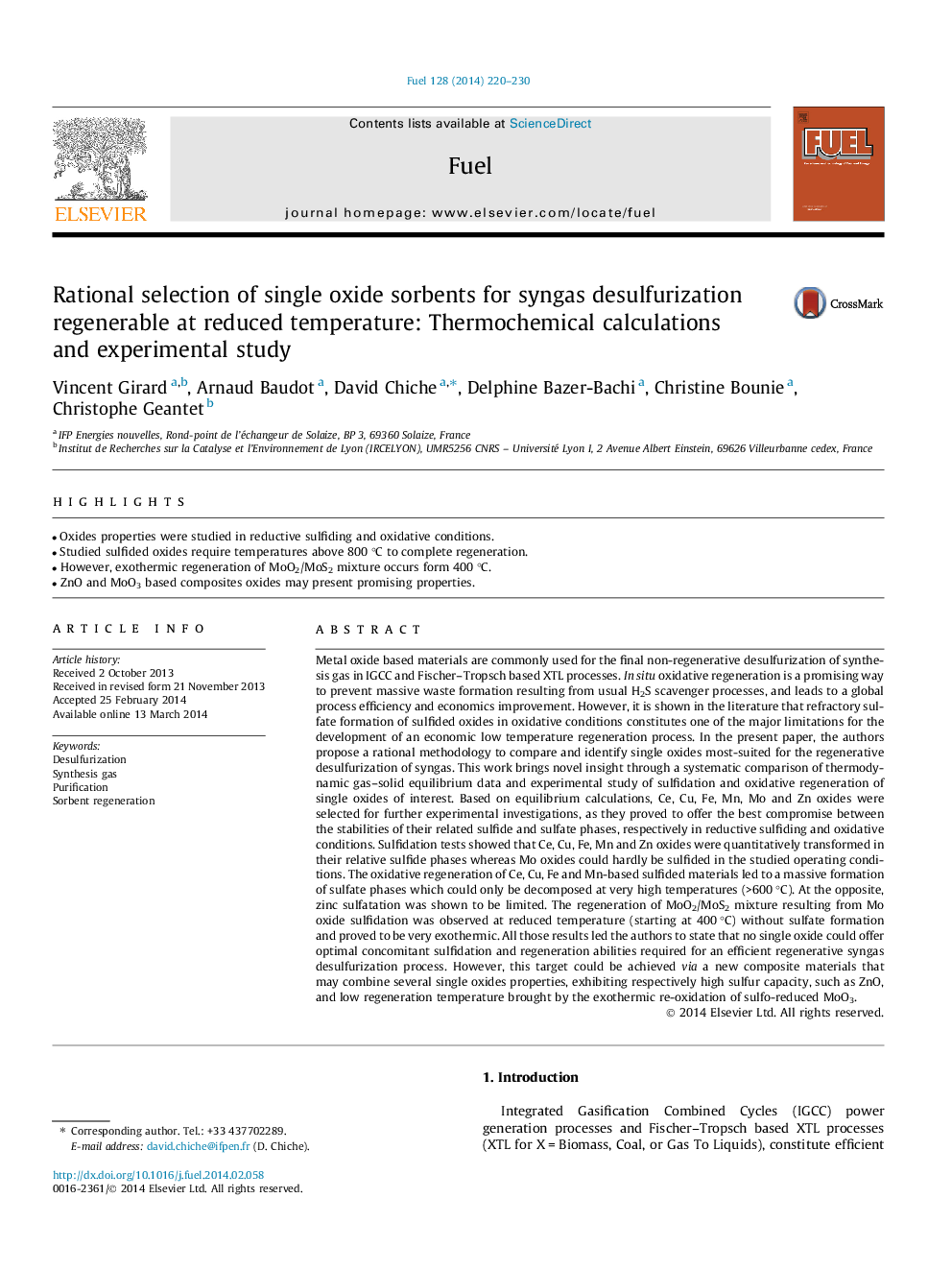| Article ID | Journal | Published Year | Pages | File Type |
|---|---|---|---|---|
| 6637596 | Fuel | 2014 | 11 Pages |
Abstract
Metal oxide based materials are commonly used for the final non-regenerative desulfurization of synthesis gas in IGCC and Fischer-Tropsch based XTL processes. In situ oxidative regeneration is a promising way to prevent massive waste formation resulting from usual H2S scavenger processes, and leads to a global process efficiency and economics improvement. However, it is shown in the literature that refractory sulfate formation of sulfided oxides in oxidative conditions constitutes one of the major limitations for the development of an economic low temperature regeneration process. In the present paper, the authors propose a rational methodology to compare and identify single oxides most-suited for the regenerative desulfurization of syngas. This work brings novel insight through a systematic comparison of thermodynamic gas-solid equilibrium data and experimental study of sulfidation and oxidative regeneration of single oxides of interest. Based on equilibrium calculations, Ce, Cu, Fe, Mn, Mo and Zn oxides were selected for further experimental investigations, as they proved to offer the best compromise between the stabilities of their related sulfide and sulfate phases, respectively in reductive sulfiding and oxidative conditions. Sulfidation tests showed that Ce, Cu, Fe, Mn and Zn oxides were quantitatively transformed in their relative sulfide phases whereas Mo oxides could hardly be sulfided in the studied operating conditions. The oxidative regeneration of Ce, Cu, Fe and Mn-based sulfided materials led to a massive formation of sulfate phases which could only be decomposed at very high temperatures (>600 °C). At the opposite, zinc sulfatation was shown to be limited. The regeneration of MoO2/MoS2 mixture resulting from Mo oxide sulfidation was observed at reduced temperature (starting at 400 °C) without sulfate formation and proved to be very exothermic. All those results led the authors to state that no single oxide could offer optimal concomitant sulfidation and regeneration abilities required for an efficient regenerative syngas desulfurization process. However, this target could be achieved via a new composite materials that may combine several single oxides properties, exhibiting respectively high sulfur capacity, such as ZnO, and low regeneration temperature brought by the exothermic re-oxidation of sulfo-reduced MoO3.
Related Topics
Physical Sciences and Engineering
Chemical Engineering
Chemical Engineering (General)
Authors
Vincent Girard, Arnaud Baudot, David Chiche, Delphine Bazer-Bachi, Christine Bounie, Christophe Geantet,
